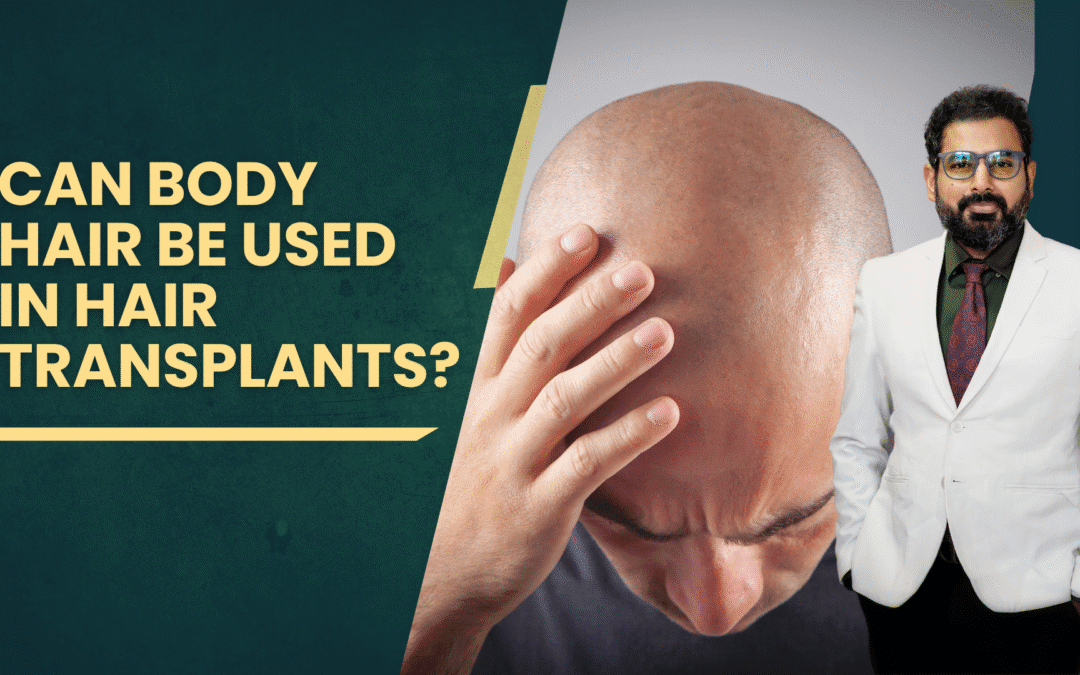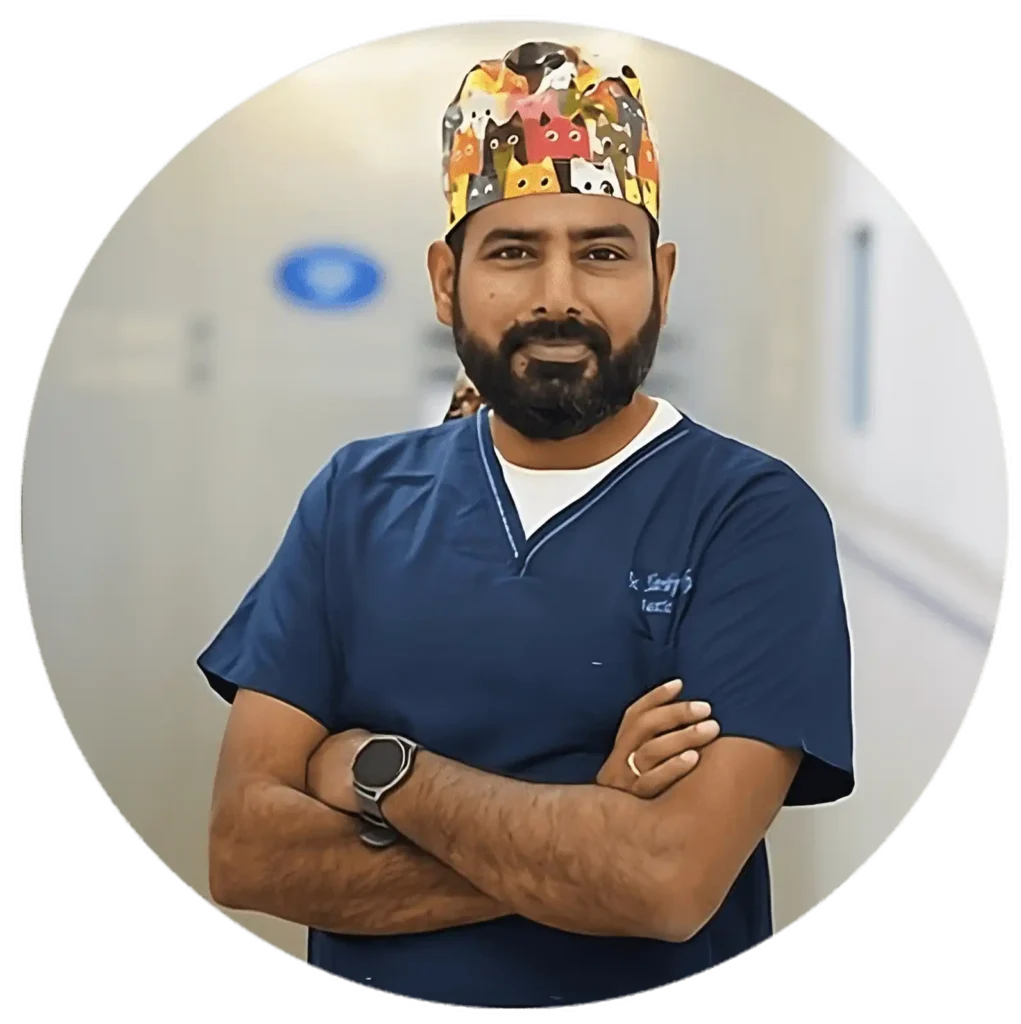Hair loss can deeply affect self-esteem, emotional wellbeing, and personal confidence—for both men and women. Whether it’s receding hairlines, bald patches, or thinning crowns, the emotional toll is undeniable. In India alone, over 35% of men and 20% of women experience noticeable hair thinning before the age of 35, and globally, more than 50% of men suffer from some form of hair loss by age 50. As hair loss rises, so does the demand for innovative, life-changing solutions.
One such breakthrough? Using body hair for scalp transplants. Traditionally, scalp hair is harvested for grafts—but what if you don’t have enough donor hair on your head? That’s where body hair steps in as a powerful alternative.
“The texture and growth cycle of body hair are different from scalp hair,” explains Dr. Harikiran Chekuri, a highly sought-after expert for hair transplant in Hyderabad. “That’s why we often use body hair to fill density in the mid-scalp or crown—not the front hairline where uniformity is critical.”
This blog explores this technique, its effectiveness, and who stands to benefit most.
Let’s dive into the details on does this process really works.
How Does a Body Hair Transplant Work?
A body hair transplant (BHT) is typically performed using the Follicular Unit Extraction (FUE) method, where individual hair follicles are harvested from various body areas and implanted into the scalp. This method is minimally invasive and doesn’t leave noticeable linear scars.
Here’s how the procedure unfolds:
Donor Site Evaluation
The surgeon evaluates potential body donor areas such as the beard, chest, or back. The quality, density, and hair growth cycle of body hair are assessed to ensure suitability.
Follicular Unit Extraction (FUE)
Using specialized tools, the surgeon extracts individual follicles from the chosen donor site. These follicles are then stored in a solution to maintain viability.
Preparing Recipient Area
Tiny incisions are made in the thinning or bald areas of the scalp, mimicking the natural direction and pattern of hair growth.
Implantation
Extracted grafts are implanted one by one into the recipient area. Precision is key to achieving a natural look.
Healing & Hair Growth
Scabbing occurs within days, and new hair starts to grow over the next 3 to 6 months, with visible improvements usually within 9–12 months.
“When scalp donor hair is limited, body hair can serve as a valuable reserve,”
says Dr. Harikiran Chekuri, an innovative hair transplant surgeon in Hyderabad.
“Thanks to advancements in FUE techniques, body-to-scalp transplants have become viable and natural-looking options for select patients. But understanding its limitations and scope is essential.”
Curious where these donor hairs actually come from? Let’s find out.
Which Body Areas Can Be Used for Hair Transplants?
Here’s a look at common donor zones:
Beard: Beard hair is the most preferred body hair source. It tends to be thick, coarse, and grows in single or double follicular units—ideal for mid-scalp density enhancement.
Chest: Chest hair has a different texture from scalp hair, but when used strategically, it can blend well with existing hair to add volume.
Back and Shoulders: These areas are less commonly used due to hair’s shorter growth cycle, but they can supplement other donor zones if required.
Arms and Legs: Rarely used unless there’s a complete lack of other donor areas. The hair is finer and may have limited compatibility with scalp hair.
Abdomen and Underarms: Used as a last resort. These hairs tend to have inconsistent growth cycles and are less predictable in results.
“Each body area presents a unique follicular structure,”
notes Dr. Harikiran Chekuri, a leading cosmetic surgeon in Hyderabad.
“Proper matching with scalp hair is crucial, and this is where individualized planning makes all the difference.”
Now, who actually qualifies for this procedure? The answer might surprise you.
Ideal Candidates for Body Hair Transplant
Not everyone is suitable for a BHT. The success of the procedure largely depends on hair characteristics, health status, and personal goals.
Here’s who may benefit:
Limited Scalp Donor Hair: Those who have undergone multiple hair transplants or have low scalp density often look to BHT as a salvage option.
Scarring Alopecia or Burn Victims: Patients with scalp scars or burns may lack viable scalp donor hair, making body hair a logical alternative.
Thick Body Hair: Men with dense beard or chest hair often have an ideal donor source for scalp restoration.
Hair Transplant Repair Cases: Those who’ve had poor results or outdated techniques may use body hair to improve density and appearance.
Comprehensive Coverage Seekers: For those aiming for higher graft counts to achieve fuller coverage, body hair provides additional donor reserves.
“An honest consultation is vital,”
emphasizes Dr. Harikiran Chekuri, a meticulous hair loss specialist in Hyderabad.
“We assess body hair growth patterns, curliness, and skin compatibility before recommending this method. It’s not one-size-fits-all.”
So, what kind of outcome can you expect from a BHT? Let’s set realistic expectations.
Body Hair Transplant Results: What to Expect
Here’s what patients can typically expect:
Growth Timeline
Initial shedding is common, followed by regrowth beginning around 3–4 months post-op. Full results can take up to 12–15 months.
Texture Differences
Body hair remains coarser or curlier than scalp hair. However, once blended properly, it can look natural and full.
Density Improvements
BHT is ideal for improving overall hair density, particularly in the mid-scalp and crown regions.
Scalp Hairline Limitations
Not suitable for recreating frontal hairlines due to mismatched texture and follicle direction.
Post-Transplant Care
Patients need to follow strict aftercare, including avoiding sun exposure, maintaining hygiene, and using prescribed products.
“The success of body hair transplantation lies not just in extraction, but in artistic placement,”
shares Dr. Harikiran Chekuri, an artistic reconstructive surgeon in Hyderabad.
“When planned carefully, it can restore not just hair—but self-confidence.”
Still wondering whether this is the right fit for you? There’s a clear next step.
Conclusion
While scalp hair remains the gold standard in transplantation, body hair offers hope to those with limited options. Whether it’s beard, chest, or other body areas, the procedure—when done by skilled hands—can produce impressive, natural-looking results.
However, it demands careful evaluation, personalized planning, and realistic expectations. Body hair is not a shortcut but a smart alternative for those who qualify.
If you’re struggling with hair loss and wondering, “Can body hair be used in hair transplants?”—the answer is yes, but only when it makes clinical sense.
Frequently Asked Questions
Is body hair transplant safe?
Yes, when performed by a trained specialist, body hair transplant is safe. The FUE technique minimizes scarring and recovery time. However, the variability of hair growth cycles means results should be assessed with realistic expectations.
How long does it take for body hair to grow on the scalp after transplant?
It typically takes about 3 to 4 months for new hair to start growing, and up to 12 months for final results. Beard hair may grow faster than chest or leg hair due to its growth cycle.
Can women undergo body hair transplants?
Yes, though it’s less common. Women with scarring alopecia or limited scalp donor hair may be candidates. The suitability depends on body hair density and personal goals.
Does the transplanted body hair keep its original characteristics?
In most cases, yes. Beard or chest hair will retain its texture, curl, and color. However, some blending occurs over time, and trimming or styling can help it appear more uniform with scalp hair.
Are results from body hair transplants permanent?
Transplanted body hair is generally permanent, just like scalp hair transplants. However, individual hair growth cycles and hormonal influences may affect long-term density and appearance.





